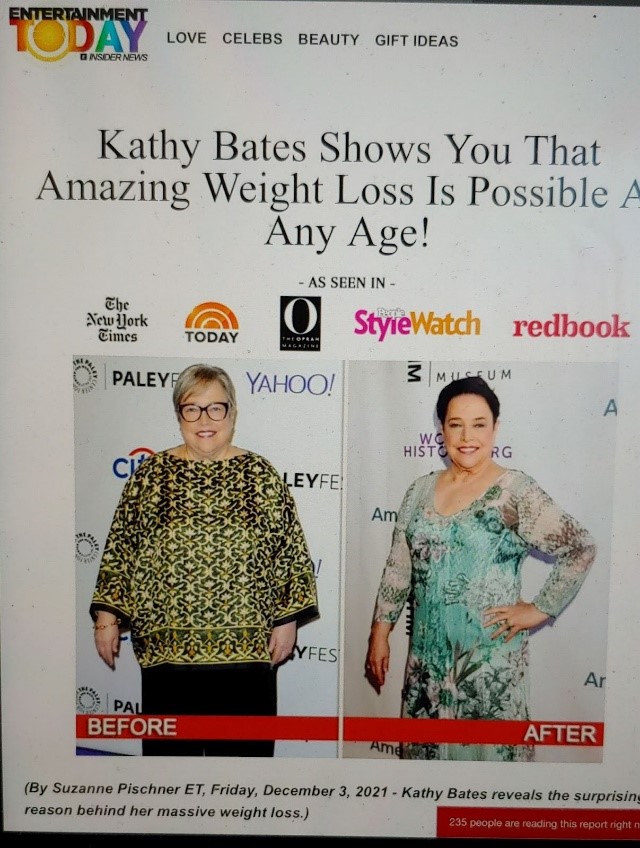Deceptive: A Favorite Media Literacy Word Students Should Know
by Frank W Baker
In a world where fake news, altered images and deep fake videos are becoming more common, it is more important than ever that our students be prepared to see through and understand the media messages they encounter. That means we must do more to teach them critical thinking and critical viewing skills
“That’s deceptive,” I said to a class of young people pointing out what was misleading in a commercial we watched together. A young lady raised her hand and asked what the word deceptive meant. Before answering, I turned to her teacher and recommended that the word be added to that week’s vocabulary list.
I am a media educator. For years, I’ve used media examples to help teachers and students better understand and recognize the techniques that media makers use in their productions. (Sometimes those techniques can be deceiving.) At the same time, I am working to help educators meet those teaching standards that include analyzing and interpreting non-print messages.
Deception Via Social Media By Influencers
It’s clear that many young people have gravitated to social media. A result of their exposure means they may eventually watch or be influenced by people who are undisclosed spokespeople for a product or service. “Most social media influencers try to make their lifestyle the goal for others. They have normalized certain things — wasting money and food, giving in to unsustainable consumption, and mindlessly encouraging status and ego gratification.” (source) Media literacy questions like “what techniques are they using to make it believable” and “who benefits” would be appropriate for students to consider. (Have your students read Scholastic’s recent story “Social Media Stars Tell All”)
Deception in the Photographic Image
A quintessential media literacy question to consider is: what is omitted; what do I not see? That applies to news events. Cropping a photo (eliminating parts) may occur for space considerations but it can also leave out important information. On the left (below) a photographer has captured former President Obama, flanked by medical professionals, speaking at the White House. This image was widely distributed. On the right, the photographer’s wider angle allows us to see the large crowd gathered there that day. Asking “what’s missing” AND researching what you don’t see is part of becoming media literate. (See my lesson plan which takes advantage of the Obama photo.)
 |
 |
Visual Literacy: When Camera Lens Distort
At the start of the pandemic, many people were critical after seeing a photo (below) of people walking along a Jacksonville Florida beach, seemingly ignoring regulations to stay 6 feet apart. What most people didn’t know is: the photo was taken with a telephoto lens—which tends to compress and distort distances. The people were adhering to the rules, but the photo made it appear that they were closer to one another than they actually were.

(Source) See more about this image and others at Snopes.
If you’ve followed me here at Middleweb, then you may already have read my previous posts where I elaborated on some of those techniques. In the examples below, it is clear that younger children do not possess the ability to recognize or understand these techniques, but older students certainly could.
Using A Camera Angle to Deceive
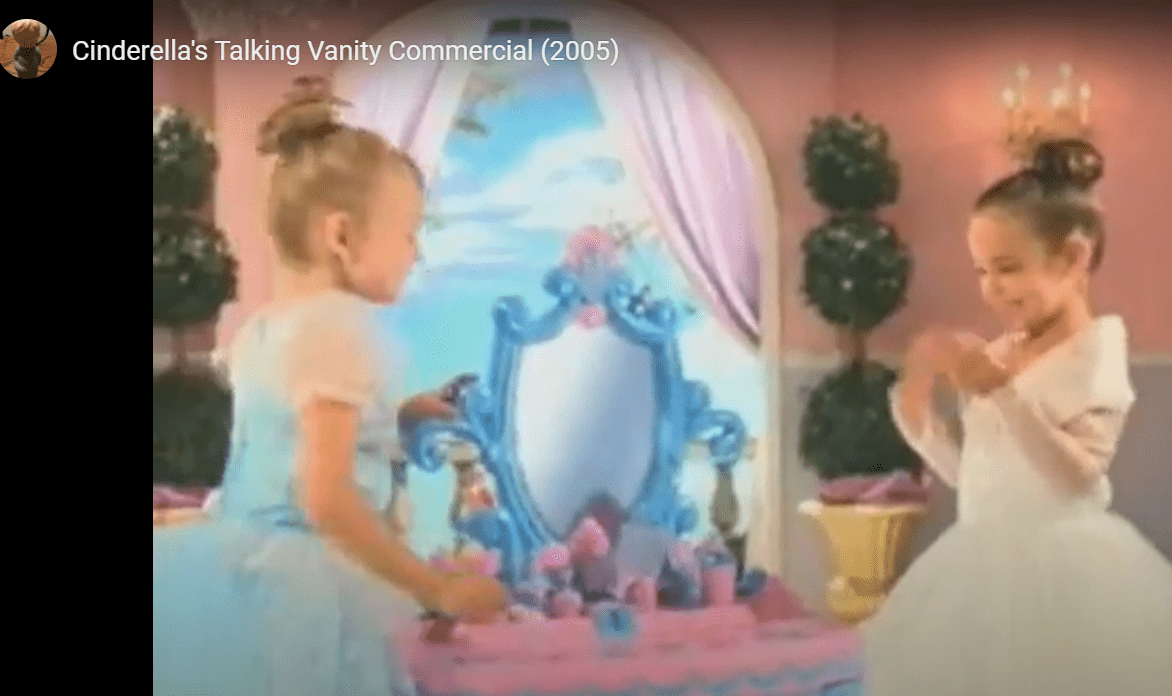
In a toy commercial for “Cinderella’s Magical Talking Vanity,” (above) the camera deliberately frames the girls standing beside the vanity—thus the unsuspecting viewer cannot adequately judge how tall the vanity actually is. (It’s not tall—it’s only 24 inches high—but it appears taller in the commercial. That’s because the girls are standing on a platform, outside the camera range.) In addition, this ad uses special effects and music that are not part of the actual toy.
Teaching Strategy: Pause the video and ask students a critical viewing question. Calling student’s attention to ‘what’s not seen’ is appropriate here.
In another toy commercial, for TYCO’s “Typhoon 2” hovercraft (below)—the announcer proclaims that the toy “glides on water on a cushion of air.” We see the toy land on water and then from below, as the camera points up as the toy appears to move on water. [In the HBO production “Buy Me That” young people are disappointed when they take the toy outside and it sinks on water.] How did they get that shot? Would students know that they got that shot by photographing the toy from below—but it’s not really on water: it’s on plate glass covered with water—and then the producers edited that shot into the commercial to make it appear to slide on water. Deceptive?
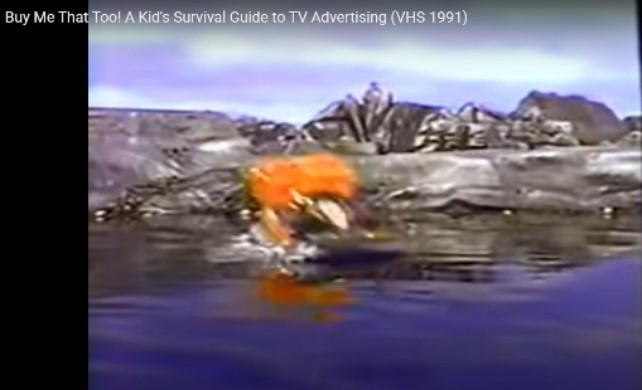 |
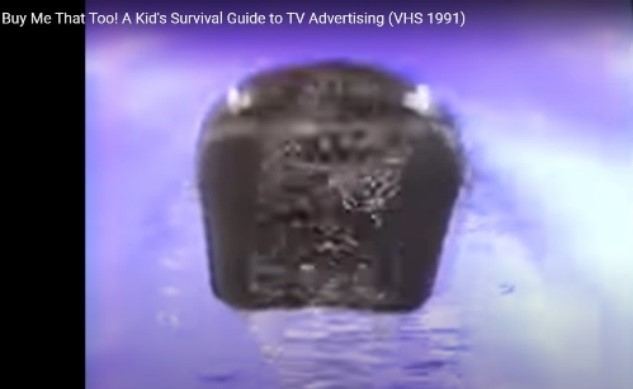 |
Teaching Strategy: Record a sample of commercials that air on Saturday morning network programming or on any one of a dozen kid-friendly cable networks. Assign a student, or a group of students, to analyze the production techniques as well as the techniques of persuasion or argument.
Four Deceptive Ad Techniques
For years, advertisers have developed a formula for how to reach and influence consumers. Below are four techniques that have been used to deceive. Introduce your students to these ad techniques and their meanings:
| Ambiguity | the use of deliberately unclear words or phrase. Example: “weasel words” such as “helps with” “up to” made with” |
| Concealed Facts | neglecting to mention or distracting attention away from unflattering facts.
|
| Exaggeration | making claims unsupported by evidence.
|
| Psychological appeal | aims to persuade by appealing to human emotions rather than reason or evidence.
|
Source: https://www.chegg.com/flashcards/advertising-exam-3-final-07ee5cb2-87f3-4274-9df4-018d11cfa39d/deck
Teaching Idea: Assign students, or groups of students, one of the above techniques. They’re to locate an advertisement that utilizes one of the techniques and return to the classroom to present the ad and justify why it fits into the technique assigned.
Fast Food Advertising
Have you ever purchased one of those delicious-looking burgers after seeing it promoted on TV only to be disappointed when you saw what was delivered? You’re not alone. “Consumer Reports” has been warning us for years about these kinds of deceptions.
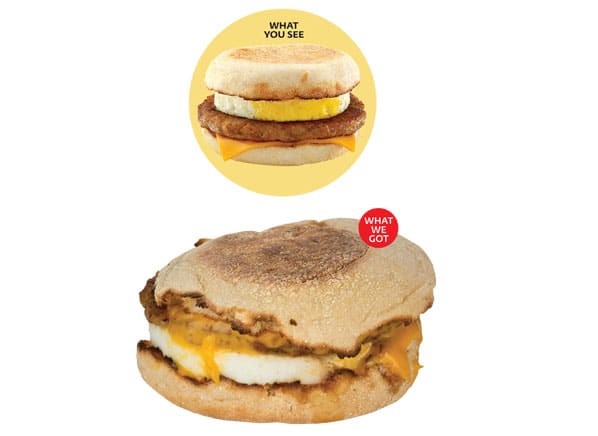
Source: https://www.consumerreports.org/cro/magazine/2014/02/fast-food-not-as-pictured/index.htm
Several websites and videos compare the ads with the actual products. Your students may even share stories about their own experiences.
See the video “Ten Tricks Advertisers Use to Make Food Look Delicious” which pulls back the curtain on some of the techniques.
As Seen In….
From INSIDER.COMs entertainment pages comes this post (below). I was first struck by the TODAY logo at the top (does it resemble the actual NBC TODAY SHOW logo?) Is that deceptive? Was the actress’ weight loss REALLY featured in all of these publications? By questioning that, I was demonstrating not only ‘healthy skepticism’ but more importantly a key media literacy skill. Is it deceptive to use those logos; did they give permission? Can a website use the phrase “as seen in” if the actress was not actually seen in that publication? How can students use their research skills to verify these claims and other information?
Buyer Beware
It is clear: influencers, advertisers, marketers and promoters will use every “trick in the book” to sell a product. And if our students are not critical thinkers, they may be fooled. And they may lose money at the same time. There is no better time than now to engage your students in understanding the techniques being used today to fool a media illiterate population. I hope this post gives you some ideas on how to get started teaching those all-important critical viewing/media literacy skills.
Recommended Resources
FTC To Companies: Knock It Off With Deceptive Social Media Endorsements
https://www.pcmag.com/news/ftc-to-companies-knock-it-off-with-the-deceptive-social-media-endorsements
What You See & What You Don’t
https://www.frankwbaker.com/mlc/what-you-see/
Epic Beach Fails: The Brochure vs Reality
https://www.loveexploring.com/galleries/84566/epic-beach-fails-the-brochure-vs-reality?page=1
When Photos Lie
https://junior.scholastic.com/issues/2018-19/090318/when-photos-lie.html#1080L
Four Deceptive Ad Techniques
https://www.chegg.com/flashcards/advertising-exam-3-final-07ee5cb2-87f3-4274-9df4-018d11cfa39d/deck
The Language of Advertising Claims
https://users.drew.edu/sminegar/English_1_FA08_Sect_003/The%20Language%20of%20Advertising%20Claims.htm
12 Deceptive Words That Food Manufacturers Use to Trick You
https://keeperofthehome.org/deceptive-food-tricks/
Do Junk Food Ads Make You Hungry?
https://upfront.scholastic.com/pages/promotion/navigationlps/010421/do-junk-food-ads-make-you-hungry.html#1220L
Lesson Plan: Are Junk Food Ads Targeting You?
https://junior.scholastic.com/pages/promotion/011821/are-junk-food-ads-targeting-you/lesson-plan.html
Share This Page:



